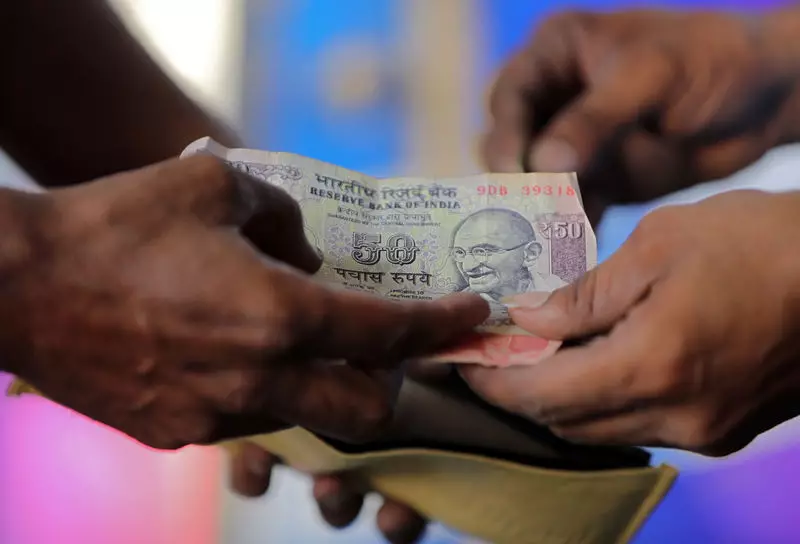Asian currencies faced pressure on a Thursday as the persistent stability of the US dollar near its two-year peak created a challenging backdrop. Significantly, the Indian rupee dipped to an unprecedented low, raising alarms among market observers. Christmas celebrations saw most financial markets in the region shuttered the previous day, contributing to trading dynamics that reflect underlying economic conditions.
The US Dollar Index maintained a steady course, revealing its robust position relative to other currencies despite fluctuations in dollar futures during Asian trading hours. The primary catalyzer for the dollar’s enduring strength appears to be the Federal Reserve’s monetary policy outlook. With fewer anticipated interest rate cuts projected for 2025, the Fed’s strategy, influenced by persistent inflation in the U.S., has created a strong incentive for investors to hold dollars. This expectation, which diverges from a more dovish view presented earlier, underscores a recalibrated approach to interest rates.
The implications for Asian currencies, however, are underwhelming. A stark demonstration of this was notably seen with the Indian rupee, which succumbed to historical lows against the dollar. The USD/INR exchange rate ascended to a record level of 85.497, reflecting a worrying trend for the Indian economy and its currency stability. This depreciation highlights growing concerns over India’s economic health, particularly as it grapples with inflation and foreign investment challenges.
The overall trend in Asian currencies has been discouraging, with a number of regional currencies faltering in the wake of dollar strength. Despite previous weeks where a stronger dollar might have led to a comprehensive downturn, the inability of currencies such as the Philippine peso and the Australian dollar to sustain their value signals a broader malaise gripping the region.
For instance, while the USD/SGD pair saw a slight uptick of 0.1%, the Australian dollar depreciated by 0.2%. This divergence reflects the complex interplay of regional economic conditions relative to US monetary policy. Meanwhile, the South Korean won exhibited resilience with a 0.4% gain against the dollar, diverging from the overall trend but suggesting targeted domestic factors that may bolster its standing temporarily.
A significant development was observed in China’s currency dynamics where the onshore yuan’s USD/CNY pair experienced an uptick. This comes on the heels of an announcement regarding the issuance of record-breaking special treasury bonds. The Chinese government plans to deploy an astounding 3 trillion yuan—approximately $411 billion—toward stimulating its faltering economy. This fiscal maneuver demonstrates a proactive approach to reversing the economic slowdown that has been exacerbated by global economic uncertainties and internal challenges.
Asia’s economic landscape appears increasingly intricate, with disparate strategies emerging among countries to counteract the dollar’s strength. The approach taken by Chinese authorities contrasts sharply with regions less willing to implement similar expansive fiscal measures.
The atmosphere surrounding Asian currencies suggests a precarious outlook as the US dollar’s allure remains undiminished. Adding to this uncertainty, Japan is preparing a sizeable budget of $735 billion, seemingly to grapple with escalating social security and debt servicing costs. The Bank of Japan’s recent comments indicate a potential pivot toward increased interest rates, which may provide a flicker of hope for a stronger yen.
While the dollar’s steadiness plays a significant role in influencing the performance of Asian currencies, it is essential to consider each economy’s unique narrative. As the region navigates these turbulent waters, a balance must be struck between domestic policy strategies and external market factors. The interdependency of global economic trends will undoubtedly dictate the trajectories of currencies across Asia in the coming months. Hence, careful observation is advised as markets continue to adapt to these evolving economic realities.


Leave a Reply